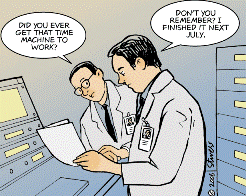 Just over a year ago we issued a detailed Sydney market report which forecast the resurgence in Sydney market activity that is currently making headlines. With that forecast now a widely accepted reality, we should all turn our attention to how the upturn in Sydney will unfold over the period ahead. But first here’s a recap on some of our observations in that report back in July 2012: “The Sydney residential market is fundamentally strong. The current imbalance between supply and demand should drive values through the period ahead. In the short term, higher value market segments may not perform as well as middle and lower value segments as higher value property is prone to volatile price movements in times of general economic uncertainty. The western and north-western regions of Sydney have been experiencing lower vacancy rates and higher levels of population growth than greater Sydney over recent years. Western Sydney also offers a level of affordability to both home buyers and renters that cannot be found in other regions of Sydney. Due to rising costs in the construction of new property we do not expect to see a significant boost in levels of construction until such time as values have risen and the viability of new development projects improves. The market will remain under supplied for the next three or more years, continuing to place pressure on values and rents. Quartile currently recommends investment in new property, primarily medium density, in the western corridor of Sydney (between Parramatta and Penrith) priced below the Sydney median value ($462,145) where design configurations reflect local demographics.” It’s now obvious Sydney sales volumes and prices are on the move. Yet some people can’t seem to get their heads around the fact that prices are rising despite Sydney already being Australia’s most expensive city. The thing is, Sydney has always been our most expensive city and probably always will be. It has our largest population, second highest incomes (after Canberra) and more importantly, most constrained land supply. The relativity between Sydney prices and other cities waxes and wanes over time depending on where each city is positioned in its unique property cycle. At present prices in most other cities are closer to Sydney’s than they have been in a very long time. But Sydney is about to lurch ahead and re-establish its pre-eminence in relative value terms. So what happens next? The current Sydney median house price is less than it was ten years ago in real terms. I’ll say it again. Excluding the effect of inflation on prices, Sydney houses are cheaper today than they were in late 2003, ten years ago, at the peak of the last Sydney upturn. When you see press reports about bubbles and over-heating in the Sydney market, understand, and perhaps have a quiet smile to yourself, that this market upturn is just beginning. It is still early days. Nevertheless, there are things to be aware of and strategies to employ to steer a productive course through a market that is starting to hit its straps. Affordability is an issue and I would suggest that the strategy we were advocating a year ago (and long before that) is still appropriate. Which is, focus on affordable property. The properties I want to own as investments are the ones that the largest possible number of people need, want, desire and can afford. If that means considering Sydney’s west, then consider Sydney’s west. I’ve said many times that the most common error people make in attempting to comprehend how residential markets work is confusing desirability with performance. Growth in residential values has little to do with aspirational values. Over time a property, suburb or region will not out-perform others because it is “nicer”. It will no doubt be higher priced because it is a more desirable area but will not necessarily grow at a faster rate. At the extreme end of that phenomenon, very high value properties may be the celebrities of the real estate world but the reality is they are volatile creatures experiencing euphoric highs and tragic lows over time. The next phase in Sydney will see the rate of price growth accelerate as more participants enter the market and sales volumes increase further. Rental growth will slow as tenants exit the rental market in favour of home ownership while the supply of rental property will increase as construction rates move up in response to higher values underwriting the viability of new projects a proportion of which will be acquired by investors and placed in the rental market. This will play out over the next three or so years. What we are seeing in Sydney is a classic market upturn where demand exceeds supply, median prices are moving up across all market segments, rental yields are at cyclical highs and interest rates are fortuitously attractive. So history does repeat after all. Back to the future. Again. |
AuthorAn ongoing collection of thoughts, opinions, observations and recommendations by long time property analyst and commentator Brett Johnson. Archives
November 2017
|
The inside information on residential property investment
